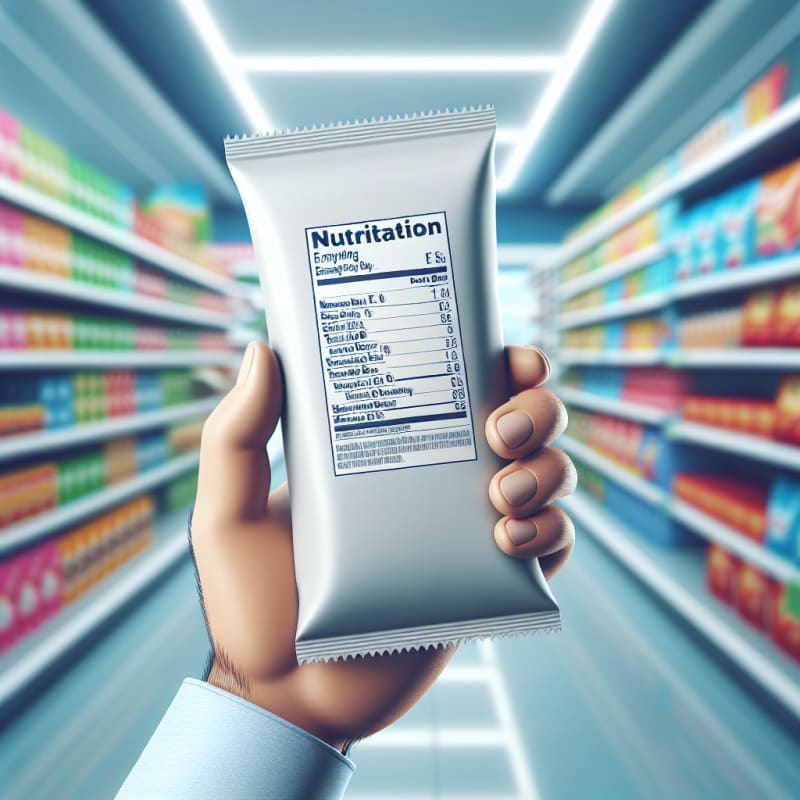How To Scan Food Labels For E Numbers: A 2025 Guide for Smart Consumers
Category: Generic Scanners | Focus Keyword: how to scan food labels for e numbers
When a Simple Meal Isn’t So Simple: A Parent’s Story
Last spring, Anna, a mother of two in Chicago, prepared her son’s favorite pasta for dinner. Within an hour, he developed hives and stomach pain. The culprit? A seemingly innocent ingredient—an E number additive lurking in the sauce. Anna’s story is not unique. For millions of families worldwide, decoding food labels has become a daily necessity, especially as food sensitivities and allergies rise[1].
What Are E Numbers and Why Do They Matter?
E numbers are codes assigned to food additives approved for use in the European Union and recognized globally. They include preservatives, colorings, flavor enhancers, and emulsifiers. While many are safe, some can trigger allergic reactions or intolerances, especially in children and sensitive individuals[2].
- E100–E199: Colors
- E200–E299: Preservatives
- E300–E399: Antioxidants, acidity regulators
- E400–E499: Thickeners, stabilizers, emulsifiers
Understanding these codes is crucial for anyone managing food allergies, sensitivities, or dietary preferences.
Labeling Laws: US vs. EU
| Region | Labeling Authority | Allergen Disclosure | E Number Usage |
|---|---|---|---|
| United States | FDA | Mandatory for 9 major allergens (e.g., milk, eggs, peanuts) | Additives listed by name, not E number |
| European Union | EFSA | Mandatory for 14 allergens, highlighted on label | E numbers required for approved additives |
In the U.S., the Food and Drug Administration (FDA) requires ingredient lists and allergen labeling, but E numbers are rarely shown[3]. In the EU, the European Food Safety Authority (EFSA) mandates E numbers for approved additives and stricter allergen disclosure[4]. This difference can make shopping abroad or for imported foods challenging.
Why Scanning Food Labels for E Numbers Is Essential
News outlets like The New York Times and BBC Health have reported a surge in consumer concern over food additives. With over 300 E numbers in circulation, manual label reading is error-prone and time-consuming. For those with food sensitivities, a missed additive can mean a trip to the ER.
According to a recent PubMed study, over 20% of food allergy incidents are linked to misreading or misunderstanding ingredient labels[5].
How to Scan Food Labels for E Numbers: Step-by-Step Guide
- Identify the ingredient list. Look for the section labeled “Ingredients” or its translation.
- Spot additives. In the EU, look for codes like “E102” or “E621.” In the US, look for chemical names (e.g., “Tartrazine” for E102).
- Use a scanner app. Modern apps like Food Scan Genius can instantly decode and flag E numbers for you.
- Check for allergens. Look for bolded or highlighted allergens, especially in EU products.
- Consult reliable sources. If in doubt, check the FDA or EFSA websites for up-to-date additive safety information.
Pro tip: Always scan the label before purchase, especially for imported or unfamiliar brands.
Introducing Food Scan Genius: Your Pocket Food Label Scanner
Food Scan Genius (scangeni.us) is a free app designed for families, travelers, and anyone with dietary restrictions. Using your smartphone camera, it scans food labels, instantly flags risky E numbers, and explains what each code means.
- Instant E number detection—just point and scan.
- Personalized alerts for allergens, vegan/vegetarian, gluten-free, and more.
- Global database—covers US and EU labeling standards.
- Offline mode for travel or low-connectivity shopping.
User Testimonial: “My daughter is allergic to several additives. Food Scan Genius has changed our shopping experience—no more panic at the grocery store. I recommend it to every parent!” — Maria, Berlin
Download Food Scan Genius now and shop with confidence.
Q&A: Common Questions About Scanning Food Labels for E Numbers
What is the easiest way to scan food labels for E numbers?
The easiest way is to use a dedicated app like Food Scan Genius, which uses your phone’s camera to read and interpret ingredient lists, highlighting any E numbers and explaining their purpose and safety status.
Are E numbers always harmful?
No. Most E numbers are approved after rigorous safety testing by authorities like the FDA and EFSA. However, some individuals may be sensitive to certain additives, especially children or those with allergies.
How do US and EU food labels differ with E numbers?
EU labels must list E numbers for additives, while US labels typically use chemical names. This makes scanning with a global database app especially useful for travelers and import shoppers.
Can Food Scan Genius help with other dietary needs?
Yes. Food Scan Genius offers filters for gluten-free, vegan, vegetarian, and other dietary preferences—making it a versatile tool for every household.
Scientific and News References
Conclusion: Empower Your Family with Knowledge and Tools
Anna’s story is a reminder that food labels are more than fine print—they’re a lifeline for families with dietary needs. By learning how to scan food labels for E numbers, you protect your loved ones from hidden risks. And with smart tools like Food Scan Genius, you can shop anywhere in the world with peace of mind. Take control of your health—start scanning today.
FAQ
- How do I know if a product contains E numbers? Check the ingredient list for codes starting with “E” (in the EU) or use a scanner app for US products.
- Is Food Scan Genius free? Yes, it’s free to download and use basic features.
- Can I use Food Scan Genius when traveling? Yes, the app supports multiple languages and works offline.
- Are all E numbers artificial? No, some are derived from natural sources but are still labeled for transparency.





